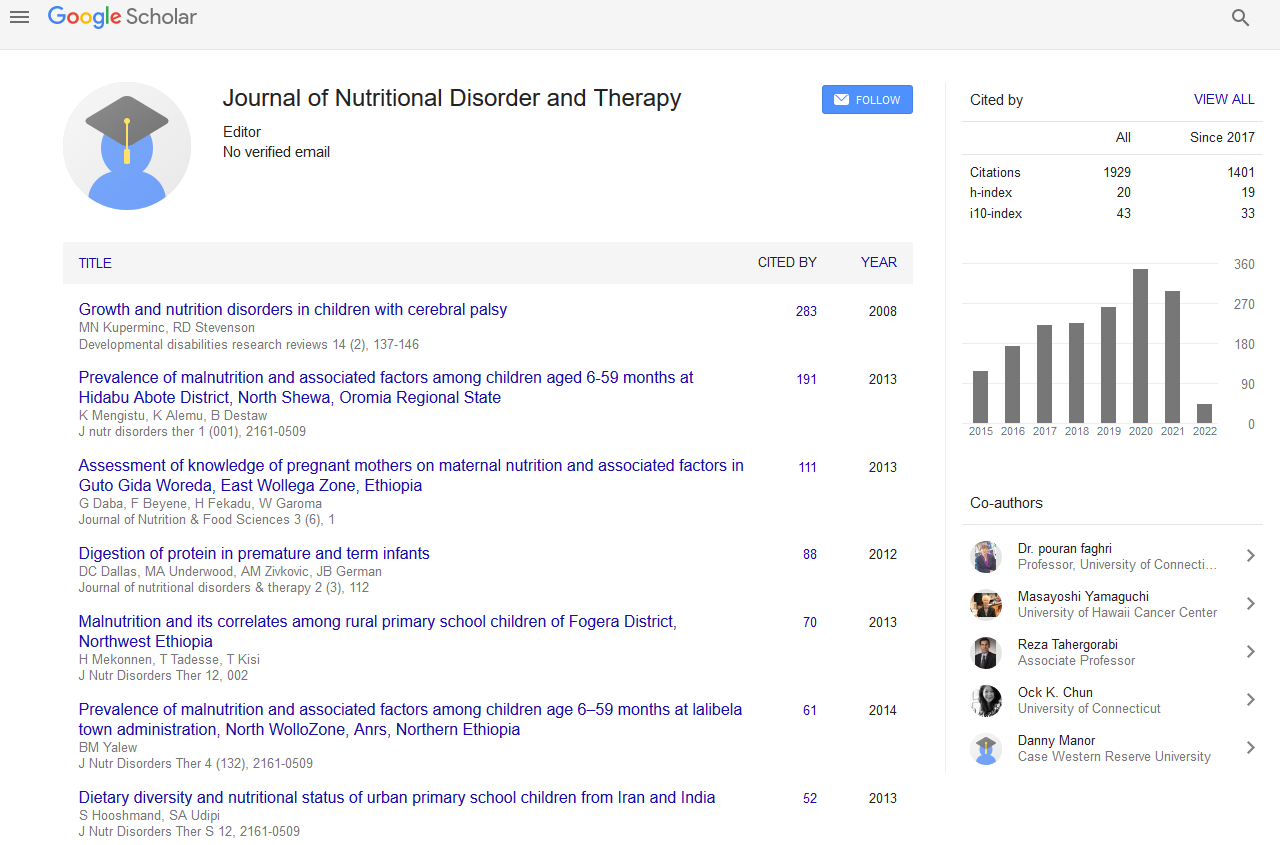Indexed In
- Open J Gate
- Genamics JournalSeek
- Academic Keys
- JournalTOCs
- Ulrich's Periodicals Directory
- RefSeek
- Hamdard University
- EBSCO A-Z
- OCLC- WorldCat
- Publons
- Geneva Foundation for Medical Education and Research
- Euro Pub
Useful Links
Share This Page
Journal Flyer

Open Access Journals
- Agri and Aquaculture
- Biochemistry
- Bioinformatics & Systems Biology
- Business & Management
- Chemistry
- Clinical Sciences
- Engineering
- Food & Nutrition
- General Science
- Genetics & Molecular Biology
- Immunology & Microbiology
- Medical Sciences
- Neuroscience & Psychology
- Nursing & Health Care
- Pharmaceutical Sciences
Percutaneous technique versus surgical techniques for tracheostomy
Joint Event on Advances in Neonatal and Pediatric Nutrition & 14th International Congress on Advances in Natural Medicines, Nutraceuticals & Neurocognition
July 19-21, 2018 | London, UK
Patrick Brass
Helios Klinikum Krefeld, Germany
Witten/Herdecke University, Germany
Posters & Accepted Abstracts: J Nutr Disorders
Abstract:
Background: Tracheostomy formation is one of the most commonly performed surgical procedures in critically ill intensive care participants requiring long-term mechanical ventilation. Both Surgical (STs) and Percutaneous Techniques (PTs) are used in current surgical practice. Until now the optimal method of performing tracheostomies in critically ill participants remains unclear. Objectives: We evaluated the effectiveness and safety of PTs compared to STs commonly used for elective tracheostomy in critically ill participants (adults and children) to assess whether there was a difference in complication rate between the procedures. We also assessed whether the effect differs between different groups of participants or settings (ICU, OR), different levels of operators experience, different PTs or whether the PT procedures carried out with or without bronchoscopic guidance. Results: 20 trials from 1990 to 2011 enrolling 1652 participants fulfilled the inclusion criteria. There was no evidence of a difference in the rate of mortality directly related to the procedure and serious, life threatening adverse events. PTs significantly reduce the rate of wound infection/stomatitis and the rate of unfavourable scarring. There was no evidence of a difference in the rate of major bleeding and tracheostomy tube occlusion/obstruction, accidental decannulation, difficult tube change. Conclusion: When compared to STs, PTs significantly reduces the rate of wound infection/stomatitis (low quality of evidence) and the rate of unfavourable scarring (very low quality of evidence due to imprecision and heterogeneity). In terms of mortality and the rate of SAE there was a low quality of evidence that non-significant positive effects exists for the PTs. In terms of the rate of major bleeding there was a very low quality of evidence that non-significant positive effects exists for the PTs. However, because several groups of participants were excluded from the included studies or data on participants-relevant outcomes are either sparse or not available for each study the generalization of the few results of this meta-analysis to all adult critically ill populations is limited.


